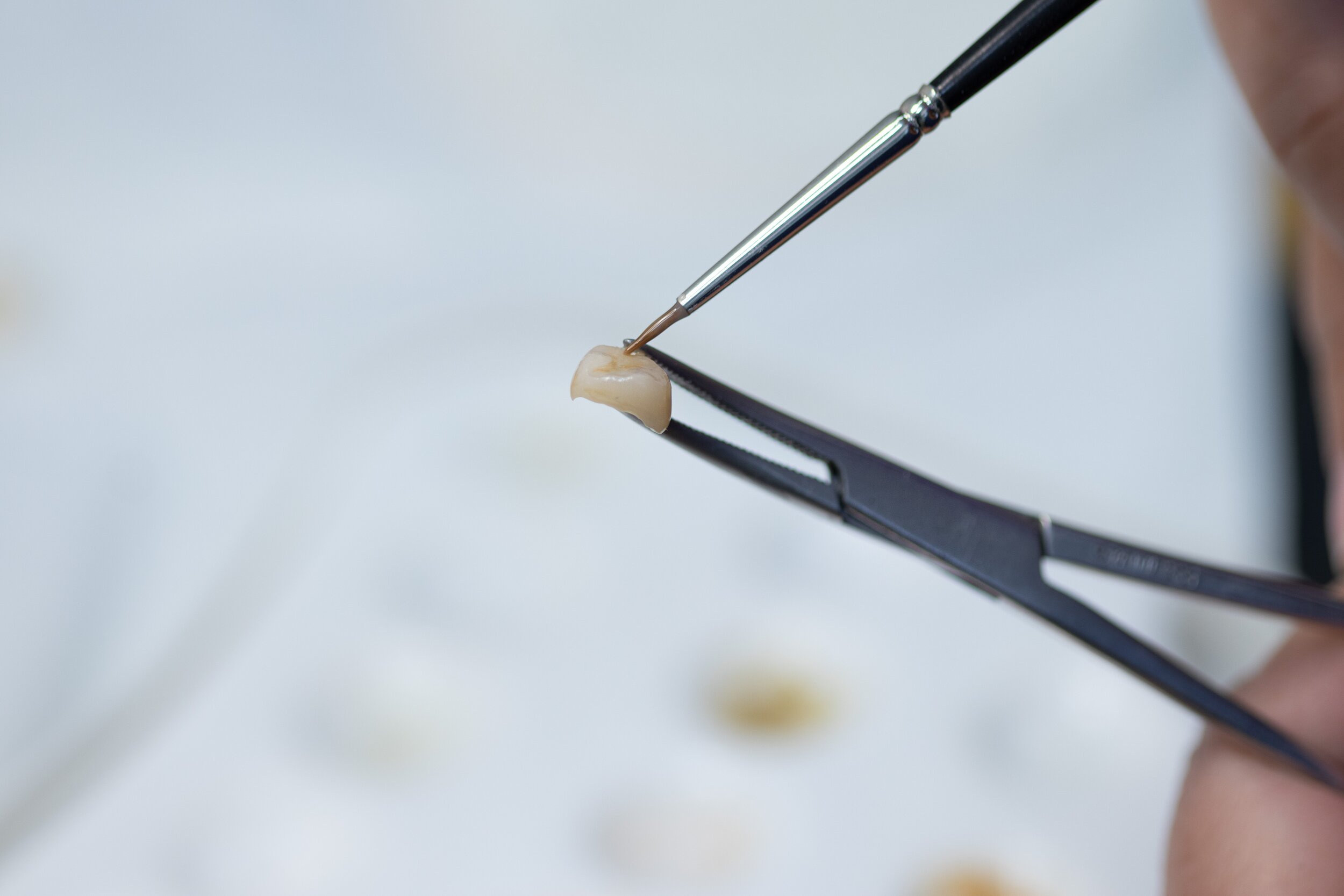
Crowns
What is a dental crown?
A dental crown is also called a "cap." It's placed on top of a damaged tooth. It is sculpted to the shape of the original tooth and can improve its appearance and strength. The crown is placed on top of the original tooth, completely covering the area of the tooth that can be seen above the gum line. It's sealed in place with a special cement.
FAQs
-
There are a number of reasons why Dr. Tracz might recommend a crown. A crown can cover a dental implant or a discolored or oddly-shaped tooth.
A crown can do more than improve the appearance of a tooth. It can protect and hold together a weak tooth. Crowns can strengthen teeth that have been weakened by excessively large fillings or that are in danger of breaking.
Many patients are great candidates for dental crowns, for both cosmetic and restorative reasons. Whether you need a crown to fix the appearance of a tooth or strengthen a weak tooth, a dental crown can protect teeth for years to come.
-
There are a variety of dental crown materials to consider. Crowns can be made from:
Stainless steel
Gold or another alloy (zirconia)
Porcelain fused to metal
Resin
Ceramic
Stainless steel is the most common material for temporary crowns and are incredibly durable. Prefabricated stainless steel crowns are commonly used for children who need crowns on baby teeth.
Metal crowns are strong and able to tolerate the force of chewing and eating, but due to their color, they’re usually reserved for use in the back of the mouth.
Porcelain fused to metal crowns have a more natural appearance than metal crowns, but they do come with some downsides. For instance, the metal portion of the crown might show as a dark line close to the gums. The opposing teeth may also experience more wear than they would with another type of crown.
Resin crowns are one of the most affordable crown options, but they're also more susceptible to cracking.
Ceramic crowns are the best choice for patients who have metal sensitivities.
-
A dental crown procedure generally requires at least two visits to the dentist. During the first appointment, your Heights Dental NY professional will take X-rays to assess the health of the tooth that requires the crown.
Next, Dr. Tracz will administer anesthesia, then build up or file down the original tooth so that the crown will attach securely. After, he will take an impression of your teeth. The impression will go to the dental lab and be used to create a custom crown. Dr. Tracz will create a temporary crown to protect your tooth until the permanent crown can be placed.
Getting a dental crown can be a simple, easy process. To discuss your crown options, contact the experienced team at Heights Dental NY or make an appointment online.
